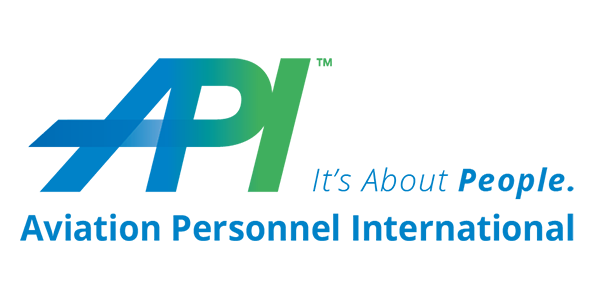Have you ever taken the time to talk to your human resources contact to learn what your annual turnover rate is? According to the Bureau of Labor Statistics, the cost to replace an employee is more than 25 percent of his or her annual salary. And, since pilots earn higher-than-average salaries, and have the added cost of training, this could add up to a serious amount of money over the course of several years. That’s why implementing an “onboarding” program is so critical in business aviation today.
What is Onboarding and Why is it Important?
Simply defined, onboarding is the process of integrating employees into their new work environment. While it sounds pretty straightforward, it really takes time and a well-orchestrated set of circumstances for it to work. In addition to equipping new hires with the tools they will need to succeed in their new jobs, a successful onboarding program also provides them with the resources to become a fully engaged and culturally aware member of a productive team.
A research study performed by the Aberdeen Group revealed that 86 percent of respondents felt that a new hire’s decision to stay with a company for the long term is made within the first six months of his or her employment, so it’s critical to ensure that a new hire is effectively onboarded sooner, rather than later, in the process.
As referenced in a white paper that API co-authored, By systematically integrating a new employee into the flow of a department and your culture, you’ll be able to establish expectations around behaviors related to safety, security and a ‘just culture.’ Then, once they’re exposed, you can test their knowledge of systems, procedures, values, etc.
I’ve put together below a checklist of seven topics to cover when designing and then implementing an effective onboarding program within your aviation department.
1. Determine Key Stakeholders.
Depending upon whom you hire, he or she will likely want to sit down with their first-line manager. It’s important to help new hires understand who their key stakeholders will be. For example, if the new employee is a scheduler, some of his or her primary stakeholders will be the executive administration, chief pilots and the lead flight attendant. Once stakeholders are identified, the new employee should be provided with as much information about his or her customary working habits as possible. For example, when is the best time of day to reach them? Do they prefer communicating by phone, email or text? Help them to set up a time to spend one on one with each key stakeholder
2. Be Prepared.
When new hires comes into your organization, have things ready for them. Order their smart phone, computer, badges and office supplies in advance. Request that their email be set up. Give them the tools they will need and set them up for success when they first walk in the door. If everyone has a nameplate on their office wall, make sure that the new hire’s is posted when he or she arrives for the first day.
3. Designate a Mentor.
At the very onset (especially in larger organizations), a mentor should be chosen to guide the new hire (mentee) through the corporate maze of paperwork and procedures. One senior pilot for a Fortune 500 company told me, As the new hire meets the department personnel, they may have a good connection with one or two people on the team. Pair these people together on projects in order for them to get to know the people better, which helps make a smooth transition into the team.
4. Determine Training Versus Development.
More likely than not, you will already have a very good idea as to what the new hire needs for both training and development. So, the next step is to develop a calendar that will capture important training and development milestones, as well as some specific role-related performance objectives for the first 30, 45, 60 and 90 days. This approach will provide the new hire with a very clear road map, as well as set the professional performance cadence expected by the business aviation organization.
5. Communicate Effectively.
Remember that there’s no such thing as over-communication during this critical period. During the first two weeks of employment, the new hire and his/her mentor should talk once a day, at minimum. For the remainder of the onboarding period, meaningful weekly communications should take place in order to assess the level of organizational assimilation, as well as address any issues quickly and thoroughly. Direction and cadence must be set proactively, leaving as little to chance as possible.
6. Discuss Policies, Procedures and Expectations.
During the first three months, as a hiring manager, you’ll want to ensure that your new employee learns how to be successful in his or her new position. Don’t rely on your memory to make sure your bases are covered. Make a list of the most important things that the new employee should know, such as the travel expense policy and how to complete a expense report. Take time to have the new hire thoroughly review company systems (e.g., scheduling and training systems). Provide a thorough list of procedures, such as how to deal with emergencies and request time off. And, most importantly, share both the written and unwritten cultural expectations, such as meeting attendance and how to interface with the executive office.
7. Get the Family Onboard.
When it comes to onboarding, don’t just stop with the new hire. Consider their family members as well. One of the first things that hiring managers often do for new pilots is to send them to recurrent or initial training, meaning that they will be gone from one to four weeks. It’s a very good idea to help the new hire’s spouse/partner to make some connections with other nearby families while they are away, and make sure that they are looked after. Remember that even though you are only hiring one employee, the whole family comes collectively as a package deal. A happy family means a happy new employee.
As the senior pilot told me, The new hire wants to be part of the team and fit in with the company personnel. The first 90 days is a ‘honeymoon phase’ where everyone is on their best behavior until they get to know each other better and settle into the job duties. The department manager should be learning more about the person’s talents and interests to direct him or her toward projects that suit them. The employee may have a background in an area that is not related to aviation, but that still adds to the value of the department. See if they have a finance background, a computer background or a talent in writing apps for iPads and smart phones. This bit of advice is a win-win for the employee and the department since both will benefit from the experience.
So there you have it. I hope you can use the above seven tips to help ensure that you retain your new employees. After all, why shouldn’t you treat each employee well—from their honeymoon phase through retirement phase—especially when you put so much work into filling each position!
Do you have specific experiences—positive or negative—with an onboarding program? If so, we’d love to hear from you in the comments section below.

